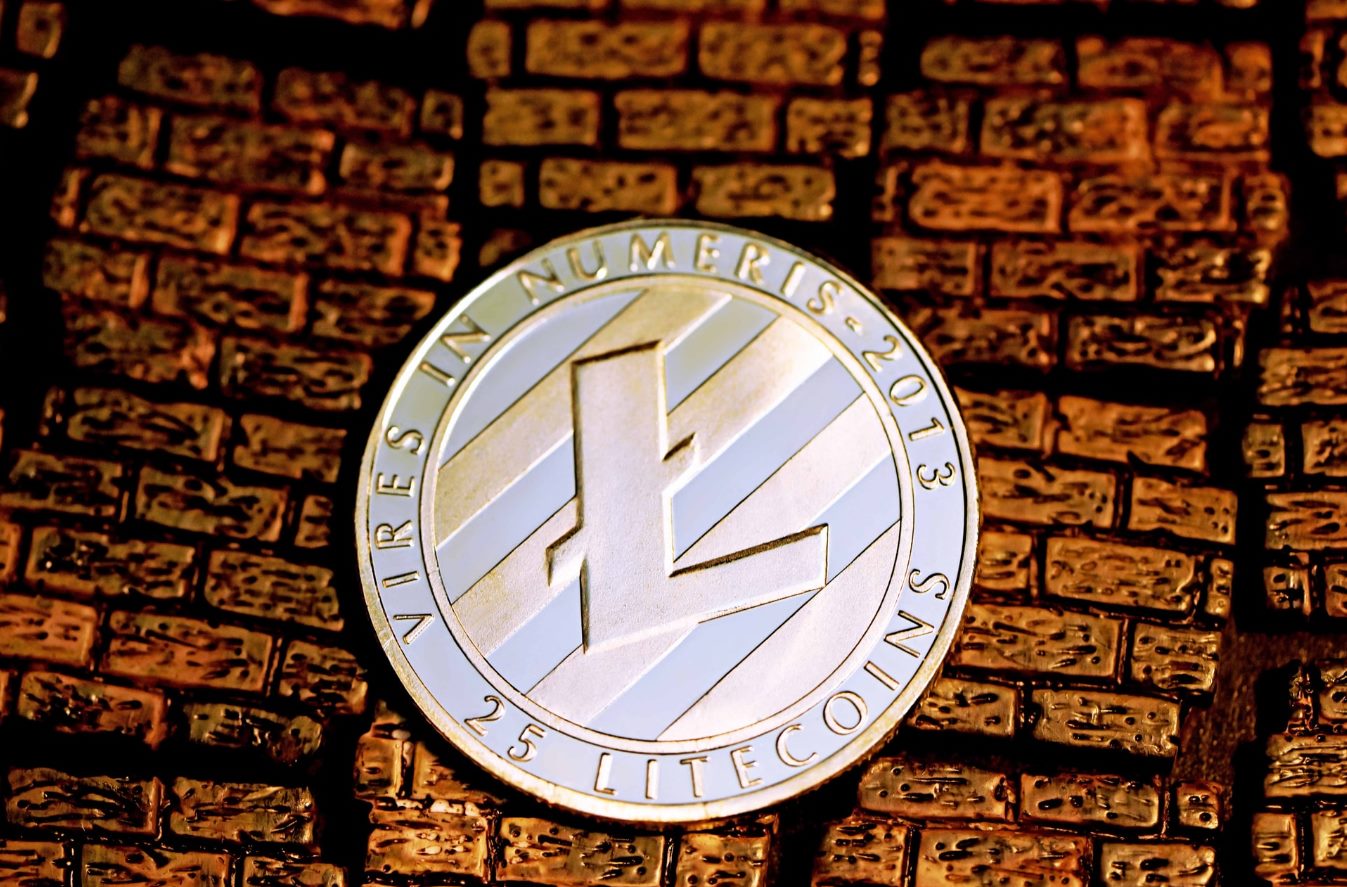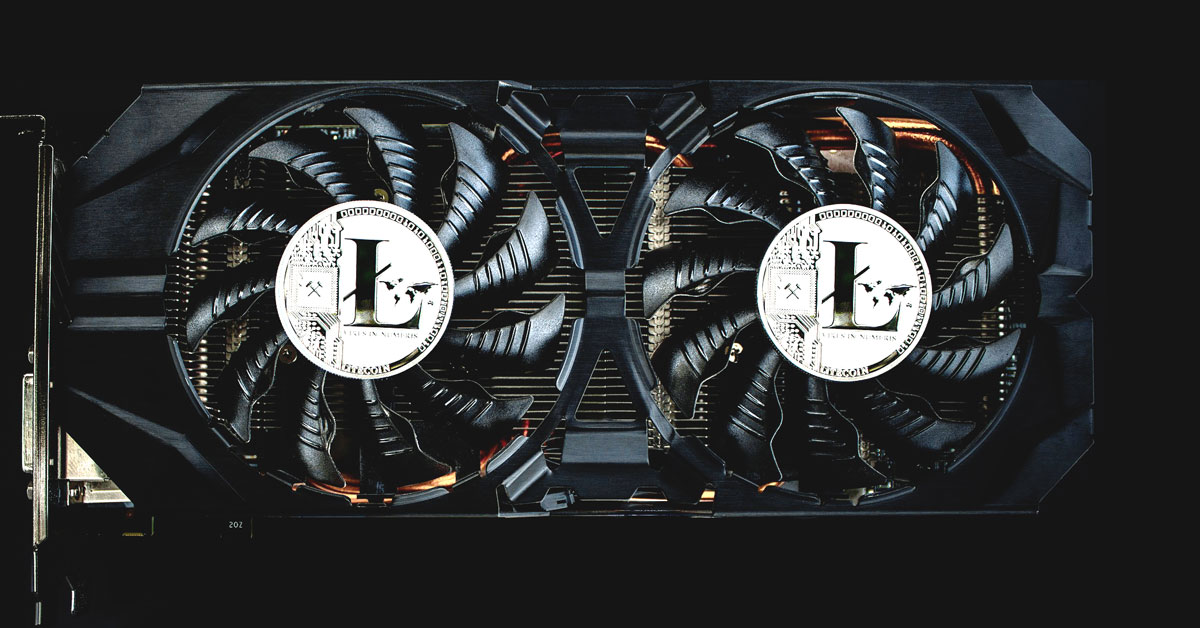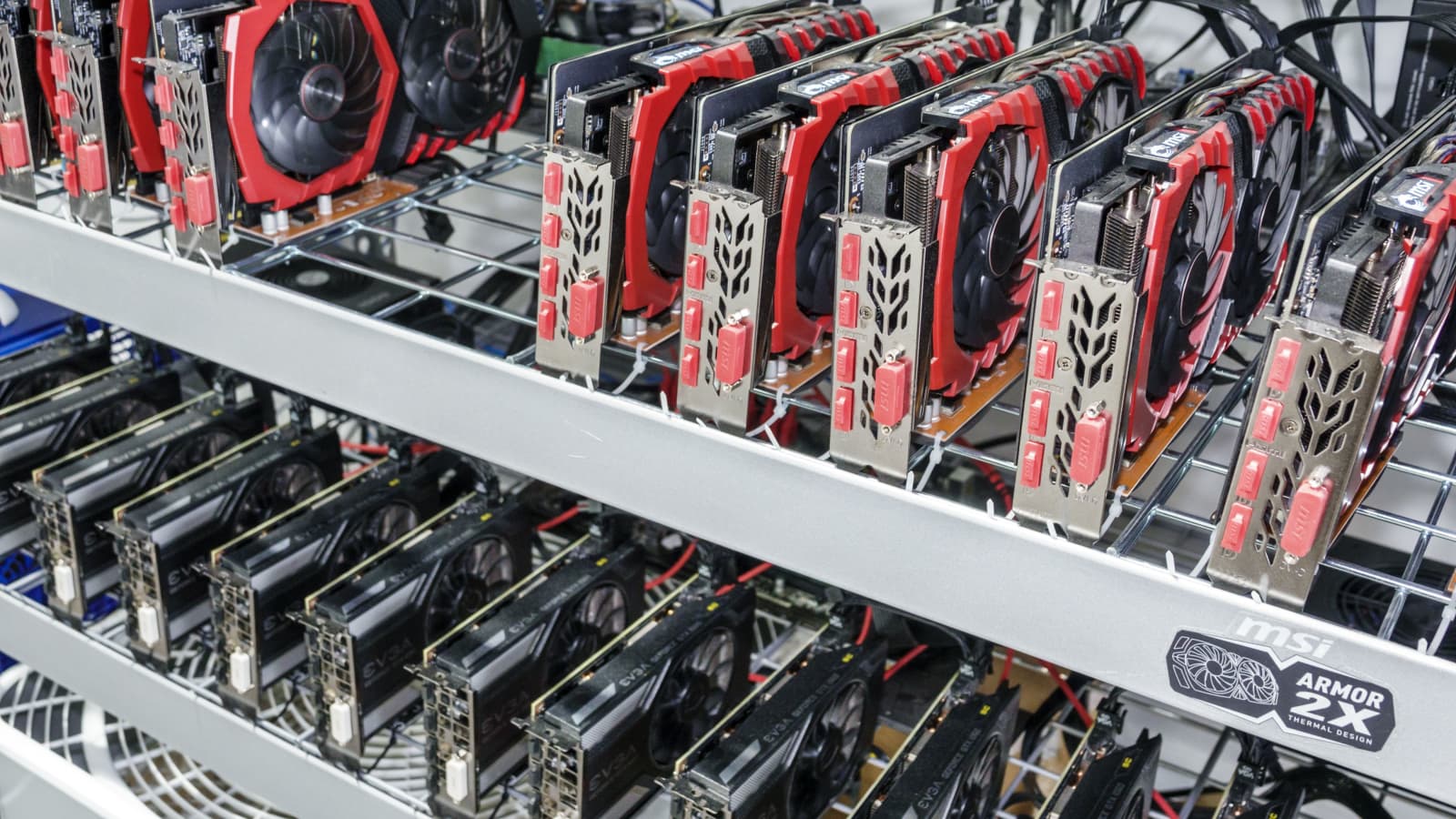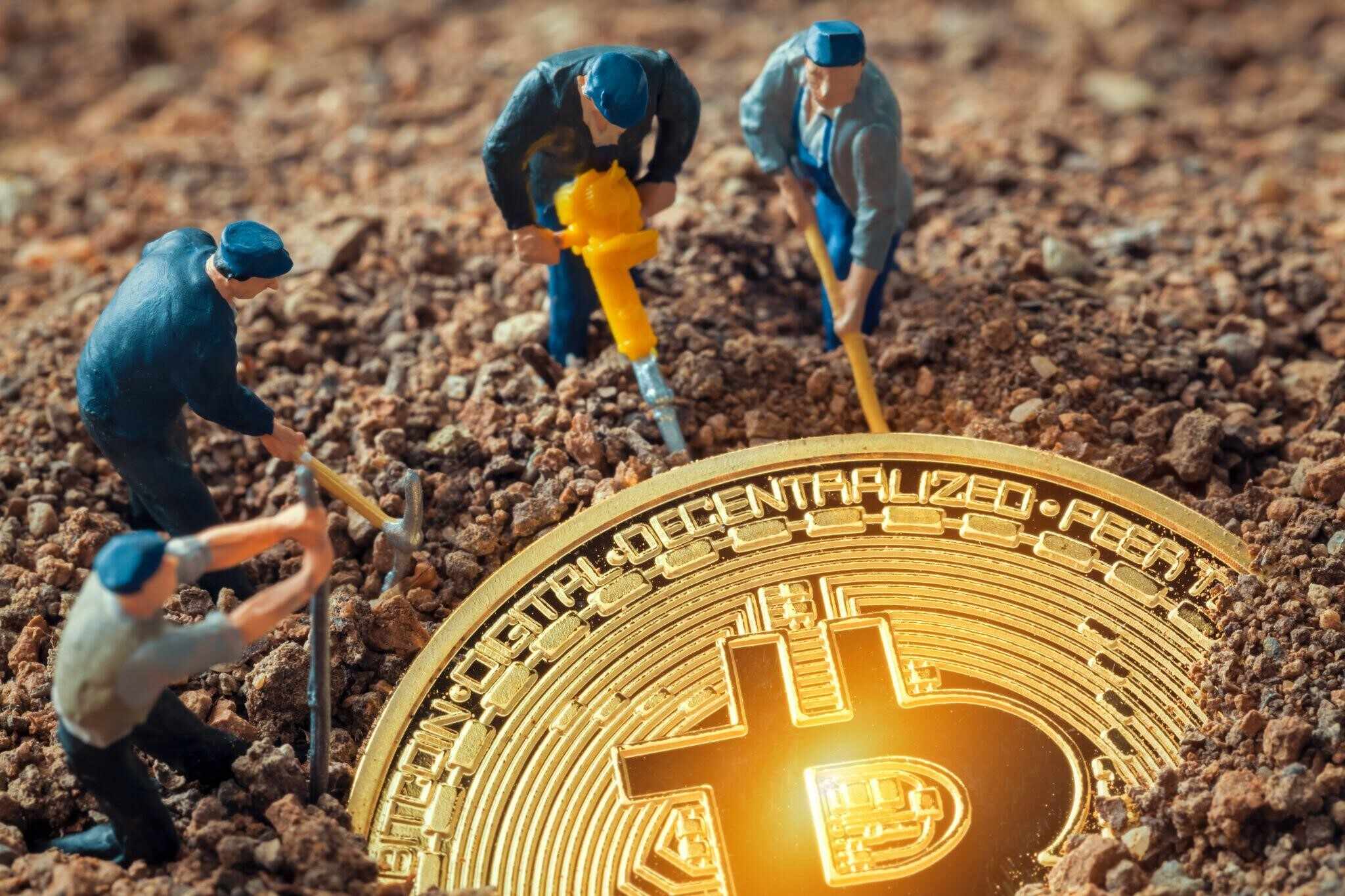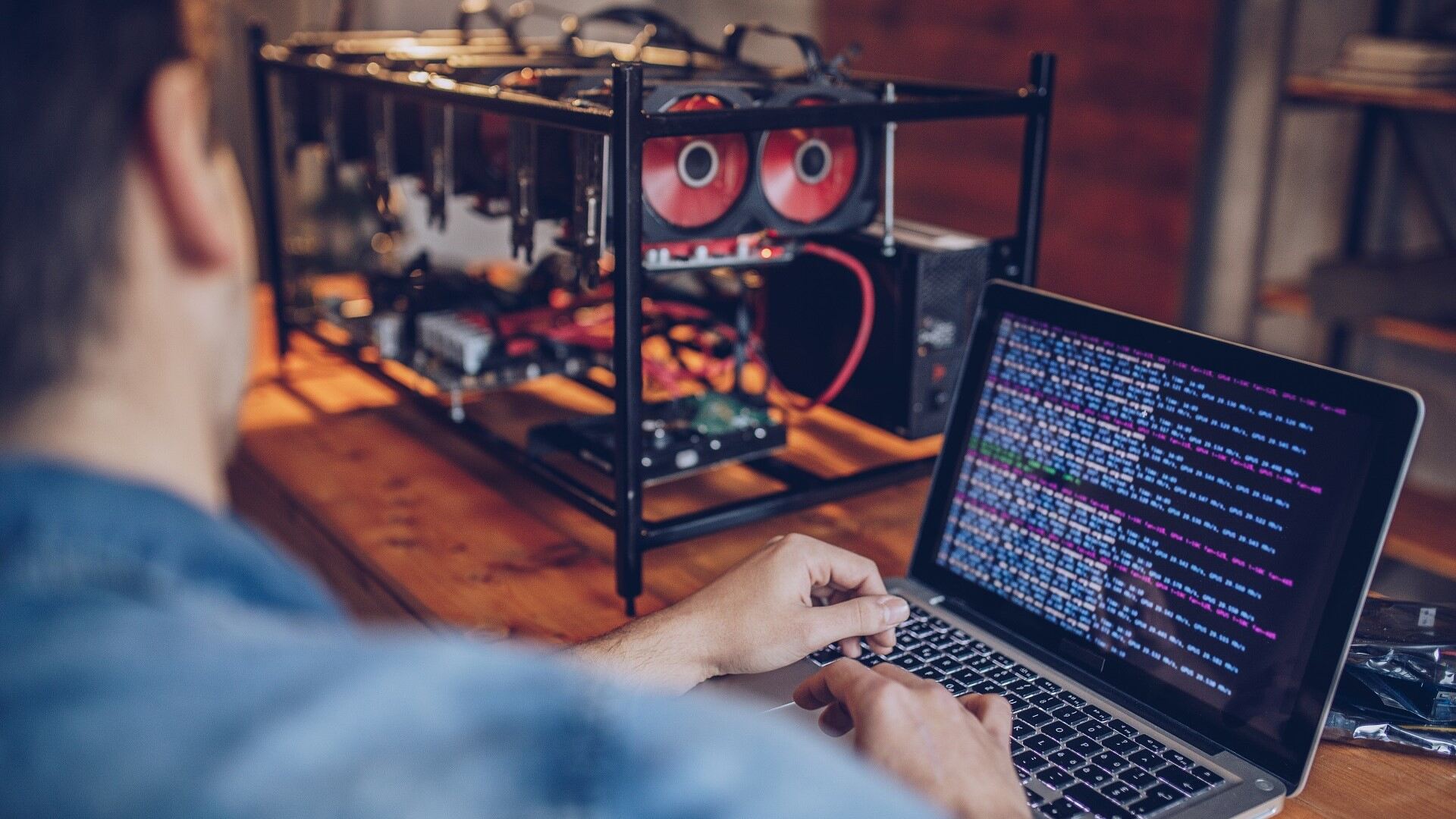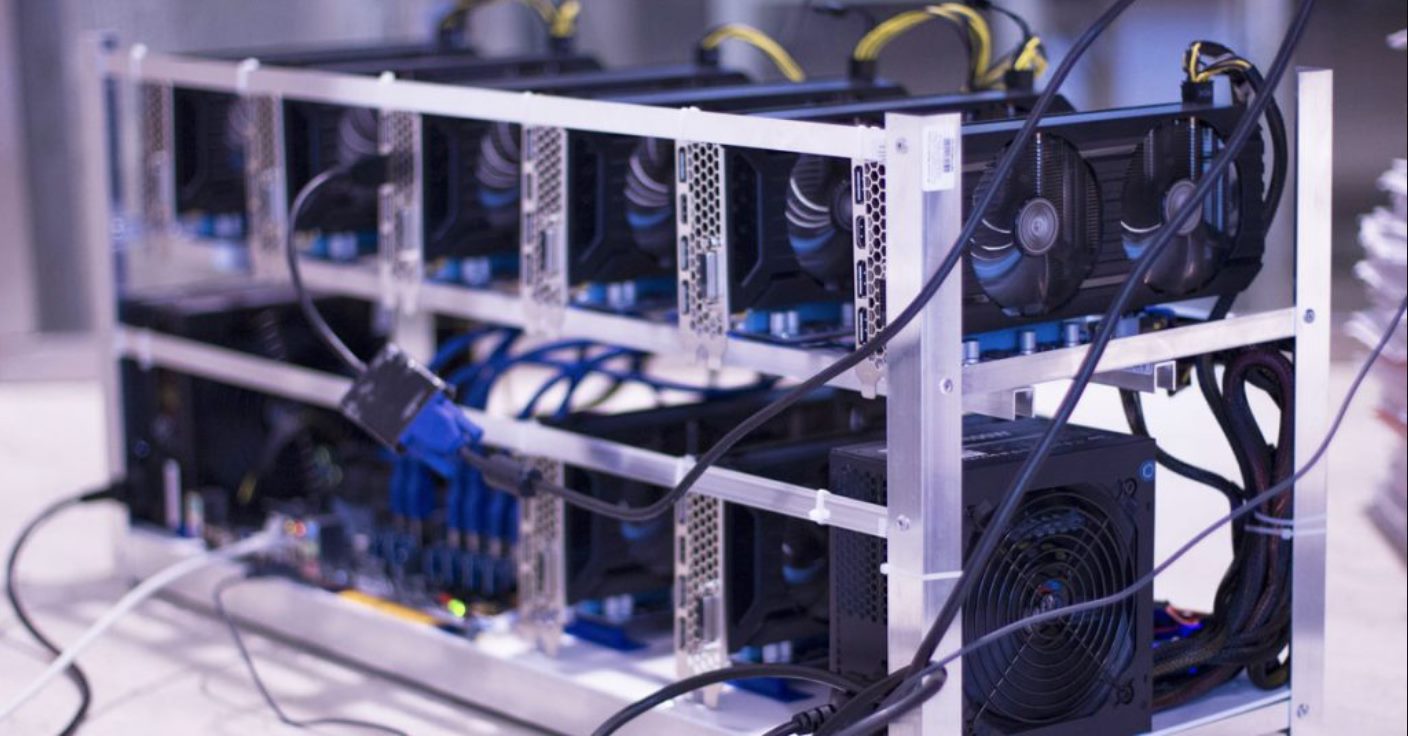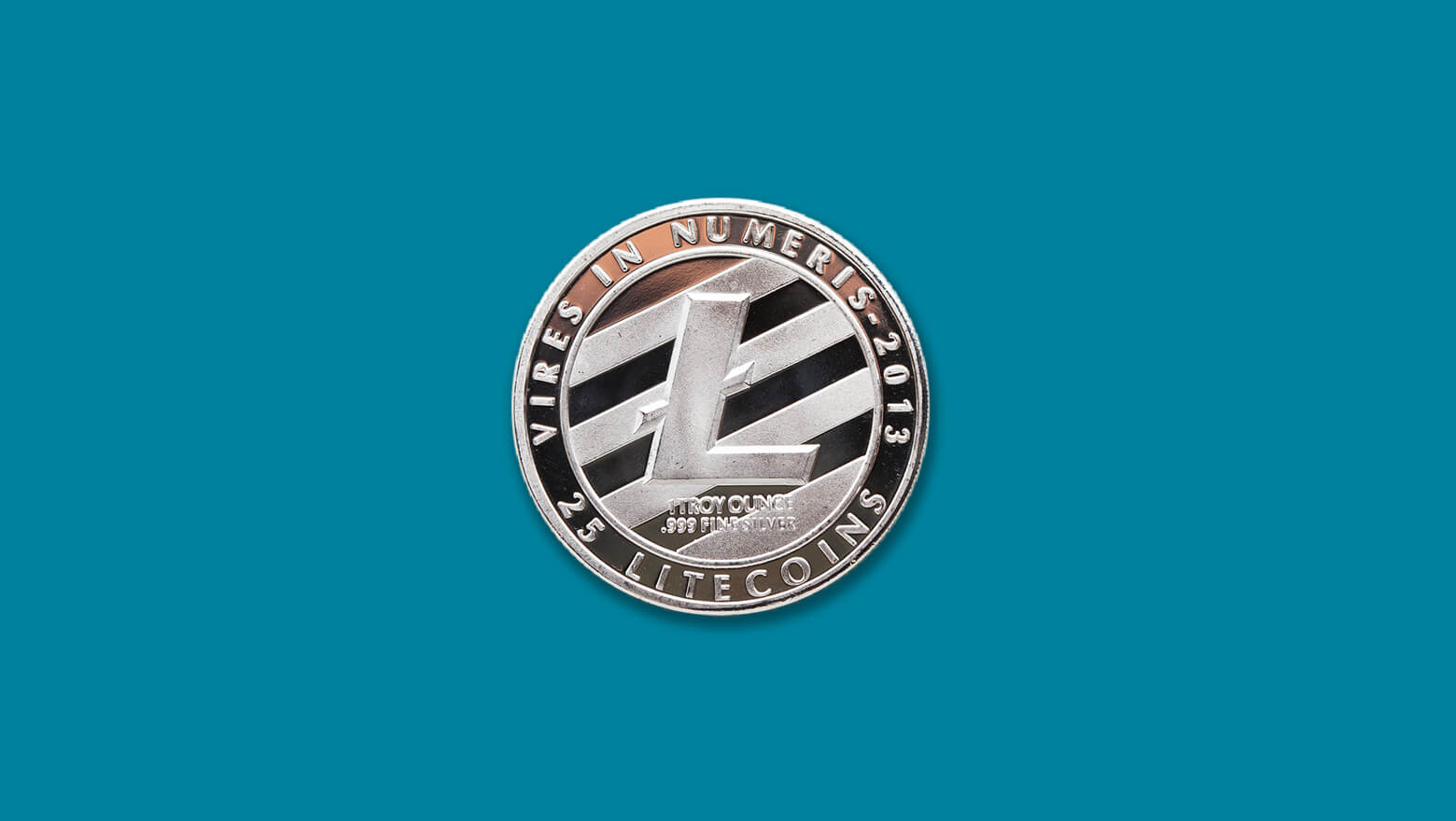Introduction
Welcome to the world of crypto mining! In this guide, we will explore the fascinating realm of solo mining Litecoin. If you’re passionate about cryptocurrencies and mining, solo mining offers a unique opportunity to directly earn rewards without relying on mining pools or sharing profits with others. So, whether you’re a seasoned miner or a newcomer to the exciting world of digital currencies, this article will walk you through the process of solo mining Litecoin.
Before we dive into the technical details, let’s quickly clarify what solo mining entails. Unlike mining in a pool, where multiple miners combine their resources to increase their chances of finding a block, solo mining involves operating independently. As a solo miner, you take on the entire responsibility of finding blocks and earning rewards on your own.
So, why would anyone choose to solo mine Litecoin instead of joining a mining pool? While mining in a pool offers more consistent and frequent rewards, solo mining has its own advantages. The most significant benefit is the potential for higher profits. When you mine solo, you don’t have to share your rewards with other miners, allowing you to take full advantage of the coins you mine. Additionally, solo mining can be an exciting and rewarding experience if you enjoy the challenge of operating independently and pushing the limits of your mining hardware.
Now that we understand the concept of solo mining and its advantages, let’s talk about the prerequisites for getting started. To successfully solo mine Litecoin, you’ll need suitable hardware and software, as well as a Litecoin wallet to store your mined coins. We’ll cover all these requirements in detail in the following sections, so stay tuned!
What is solo mining?
Solo mining is a method of cryptocurrency mining where individuals operate independently to find blocks and earn rewards without connecting to mining pools. In the context of Litecoin, solo mining involves using your own mining hardware and software to solve complex mathematical problems, ultimately adding new blocks to the blockchain and receiving a share of the Litecoin network’s reward for doing so.
When you mine solo, you take full control of the mining process. Instead of relying on a pool to distribute the work and allocate rewards, you independently contribute your computing power to solve algorithms and validate transactions. If you successfully find a block, you receive the entire reward for that block, which includes both the mining reward and any transaction fees associated with the transactions included in the block.
One of the main distinguishing features of solo mining is the level of independence it offers. By mining solo, you have complete control over your mining operations, including the choice of mining hardware, mining software, and mining configurations. This level of control can be empowering, as it allows you to optimize your mining setup according to your preferences and maximize your chances of earning rewards.
However, it’s important to note that solo mining also comes with its challenges and risks. Unlike mining in a pool, where miners combine their resources to increase the chances of finding blocks, solo mining relies solely on your own computational power. As a result, the chances of finding a block can be significantly lower, especially if you have limited hardware or are competing against powerful mining farms. This means that solo mining can be more unpredictable and may require more patience and perseverance.
Nevertheless, the potential rewards of solo mining can be higher compared to mining in a pool. Since you don’t share your rewards with other miners, you have the opportunity to earn the entire block reward. This can be particularly attractive for miners with high-performance hardware and a long-term mining strategy.
In the next sections, we will explore the hardware and software requirements for solo mining Litecoin and guide you through the process of getting started. So, if you’re ready to embark on your solo mining journey, let’s move on to the next section!
Why solo mine Litecoin?
If you’re considering mining Litecoin, you may wonder whether to join a mining pool or go the solo mining route. While both options have their merits, solo mining offers some unique advantages that may be appealing to certain miners. Let’s explore why you might choose to solo mine Litecoin.
One of the primary reasons for solo mining is the potential for higher profits. When you mine in a pool, you share the rewards with other miners based on your contributed hash power. While this ensures more consistent payouts, it also means sharing your rewards. In contrast, solo mining allows you to keep the entire block reward and transaction fees for yourself, maximizing your earnings if you successfully find a block. If you have powerful mining hardware and are confident in your ability to find blocks independently, solo mining can yield more significant long-term profits.
Solo mining also offers more control and flexibility over your mining operations. You have the freedom to choose the mining software, hardware, and configurations that work best for you. This level of control allows you to optimize your mining setup for maximum efficiency and tailor it to your specific requirements. Additionally, solo mining eliminates the reliance on a pool’s infrastructure and ensures that you have full control over the security and privacy of your mining activities.
Furthermore, solo mining can be an exciting and rewarding experience for cryptocurrency enthusiasts. It gives you the opportunity to directly contribute to the function and security of the Litecoin network. By operating independently, you become an essential part of the blockchain’s decentralized nature, helping to validate transactions and secure the network from malicious actors. The satisfaction of finding a block on your own and earning the full reward can be immensely gratifying and add a sense of accomplishment to your mining journey.
However, it’s essential to consider the potential downsides of solo mining. The main disadvantage is the inherent unpredictability of finding blocks. Solo mining relies solely on your own computational power, and the chances of finding a block can be significantly lower, especially if you have limited hardware. This means that it may take longer periods of time to receive rewards, and there is no guarantee of finding blocks consistently. Patience and perseverance are crucial when solo mining, as it can be a more long-term and uncertain venture.
In the next sections, we will delve into the hardware and software requirements for solo mining Litecoin, as well as provide a step-by-step guide to get you started. Whether you choose to mine solo or in a pool ultimately depends on your mining goals, resources, and risk tolerance. So, if you’re ready to take on the challenge and potential rewards of solo mining Litecoin, let’s move on to the next section!
Hardware requirements
To successfully solo mine Litecoin, you’ll need to ensure that you have the right hardware setup. The hardware requirements for solo mining can vary based on the complexity of the mining algorithm and the current network difficulty. Here are some key considerations when it comes to hardware:
1. Mining rig: You’ll need a dedicated mining rig or a computer with powerful graphics processing units (GPUs) or application-specific integrated circuits (ASICs). While CPUs can still be used, they are generally not as efficient for mining Litecoins. GPUs or ASICs provide higher hash rates, maximizing your chances of finding blocks and earning rewards.
2. Hash power: The hash power of your mining hardware is crucial as it determines the speed and efficiency of your mining operations. The higher the hash power, the more computational work your hardware can perform per second, increasing your chances of finding blocks. It’s recommended to have a substantial hash power to compete with other miners and increase your profitability.
3. Power supply: Mining can be power-intensive, so it’s essential to have a reliable and efficient power supply to support your mining rig. Ensure that your power supply can handle the electricity demands of your mining hardware, including the GPUs or ASICs, cooling systems, and other peripherals.
4. Cooling system: Mining generates a significant amount of heat, so proper cooling is necessary to prevent overheating and ensure the longevity of your mining hardware. Consider using fans or dedicated cooling solutions to keep your equipment at optimal temperatures.
5. Internet connection: A stable and reliable internet connection is crucial for solo mining. It allows your mining rig to connect to the Litecoin network and submit mining shares. Ensure that you have an internet connection with sufficient speed and reliability to avoid mining interruptions.
While these are the primary hardware requirements for solo mining Litecoin, it’s important to note that the industry is constantly evolving. Stay updated on the latest trends and advancements in mining hardware to ensure you’re optimizing your setup for the best performance and profitability.
Now that you’re aware of the hardware considerations, let’s move on to the next section, where we’ll discuss the software requirements for solo mining Litecoin.
Software requirements
In addition to the hardware, you’ll need specific software to facilitate the solo mining of Litecoin. The software requirements are essential for configuring and managing your mining operations effectively. Here are the key software components you need to consider:
1. Mining software: You’ll need mining software that is compatible with your mining hardware and tailored for mining Litecoin. Some popular mining software options include CGMiner, BFGMiner, and EasyMiner. These software programs provide the necessary tools to connect to the Litecoin network, manage mining configurations, and monitor your mining progress.
2. Operating system: Choose a stable and reliable operating system that is compatible with your mining software and hardware. Popular options include Windows, Linux, or macOS. Ensure that your operating system provides the necessary drivers and support for your mining hardware to operate efficiently.
3. Litecoin wallet software: To receive and store the Litecoins you mine, you’ll need a Litecoin wallet. There are various wallet options available, such as Litecoin Core, Exodus, or Electrum-LTC. Choose a wallet that suits your preferences in terms of security, accessibility, and ease of use. Make sure to keep your wallet secure by regularly backing up your wallet file and using strong passwords.
4. Mining pool software (optional): While this article focuses on solo mining, it’s worth mentioning that you have the option to switch to mining in a pool if you find solo mining too challenging or less profitable. Mining pool software allows you to connect to a mining pool of your choice and contribute your hashing power to collectively mine Litecoins with other miners. This approach offers more regular payouts but involves sharing the rewards with other participants.
5. Monitoring software: Consider using monitoring software to keep track of your mining operations and hardware performance. These tools enable you to monitor your hash rate, temperature, and power consumption. Some popular monitoring software options include MSI Afterburner, HWiNFO, or NiceHash. By monitoring your mining setup, you can detect any issues or inefficiencies and make necessary adjustments to maximize your mining profits.
With the appropriate software in place, you can effectively manage your solo mining operations and monitor your progress. Make sure to keep your software up to date to benefit from the latest improvements and security enhancements.
Now that we have covered the hardware and software requirements for solo mining Litecoin, let’s move on to the next section, where we’ll guide you through setting up your Litecoin wallet.
Setting up your Litecoin wallet
Before you start solo mining Litecoin, you’ll need to set up a Litecoin wallet to store the Litecoins you mine. A wallet is essential for securely receiving, storing, and managing your cryptocurrency. Here’s a step-by-step guide to help you set up your Litecoin wallet:
1. Choose a wallet: There are several wallet options available for Litecoin, each with its own features and security measures. Wallets like Litecoin Core, Exodus, and Electrum-LTC are popular choices. Do some research and select a wallet that meets your requirements in terms of security, ease of use, and compatibility with your operating system.
2. Download and install: Once you’ve chosen a wallet, visit the official website or a trusted source to download the wallet software. Make sure you download the version that is compatible with your operating system. Follow the installation instructions provided by the wallet software.
3. Create a new wallet: After installing the wallet software, open it and select the option to create a new wallet. This usually involves choosing a strong passphrase or password that will serve as your wallet’s encryption key. It’s crucial to choose a secure password and store it in a safe place.
4. Generate a receiving address: After creating a new wallet, the software will generate a unique receiving address for you. This address is where you will receive the Litecoins you mine. Each time you mine a block, you can specify this address as the destination for your mining rewards.
5. Backup your wallet: It’s essential to back up your wallet to protect it from loss or computer failure. Most wallet software will offer an option to create a backup file or a recovery phrase. Follow the instructions provided to create a backup and store it in a safe and secure location, preferably offline or in multiple locations.
6. Synchronize the wallet: After setting up your wallet, it will need to synchronize with the Litecoin network to download the blockchain and verify transactions. This process may take some time, as it involves downloading and verifying a vast amount of data. Keep your wallet open and connected to the internet until the synchronization is complete.
Congratulations! You have successfully set up your Litecoin wallet. Remember to keep your wallet software updated with the latest security patches and backup your wallet regularly to ensure the safety of your Litecoins. Now that you have a wallet ready, we can move on to the next section, where we’ll walk you through the process of configuring your mining software.
Configuring your mining software
With your Litecoin wallet set up, the next step in solo mining is configuring your mining software. The mining software acts as the bridge between your mining hardware and the Litecoin network, allowing you to connect and start mining. Here’s a guide to help you configure your mining software:
1. Choose your mining software: Select a mining software that is compatible with Litecoin and suits your mining hardware and operating system. Popular options include CGMiner, BFGMiner, and EasyMiner. Download the software and ensure it is the latest version available.
2. Extract and install the mining software: Extract the downloaded mining software to a designated folder on your computer. If required, follow the installation instructions provided by the software to properly install it on your system. Make sure to download the appropriate version for your operating system.
3. Configure mining settings: Open the configuration file of your mining software using a text editor. This file is usually named “cgminer.conf” or “bfgminer.conf.” The configuration file contains various settings that determine how your mining software interacts with the Litecoin network. You’ll need to specify the details of your mining hardware, Litecoin address, and pool settings (if applicable).
4. Add your Litecoin address: In the configuration file, locate the section where you can enter your Litecoin address. This is the address generated by your Litecoin wallet to receive mined Litecoins. Copy and paste your Litecoin address into the appropriate field in the mining software’s configuration file.
5. Specify mining pool details (if applicable): If you decide to mine in a pool instead of solo mining, you’ll need to provide the pool’s address and your login credentials in the configuration file. Consult the documentation of your mining software for the specific syntax and options to add pool details.
6. Configure mining parameters: Adjust the mining parameters in the configuration file according to your preferences and hardware capabilities. These parameters include the mining algorithm, intensity, thread concurrency, GPU settings, and more. Consult the documentation or online resources for your mining software to understand the available parameters and their optimal values.
7. Save and close the configuration file: After making the necessary changes, save the configuration file and close the text editor. Ensure that the file is saved with the appropriate file extension, such as “.conf” for CGMiner or BFGMiner.
By configuring your mining software correctly, you have set the foundation for successful solo mining. The configuration process may vary slightly depending on the mining software you choose, so make sure to refer to the software’s documentation or online resources for specific guidance.
In the next section, we’ll discuss how to connect to the Litecoin network and start the solo mining process. Let’s move on and get closer to mining some Litecoins!
Connecting to the Litecoin network
After configuring your mining software, the next step in solo mining Litecoin is connecting to the Litecoin network. This connection allows your mining software to communicate with other nodes in the network and start mining blocks. Here’s a guide to help you connect to the Litecoin network:
1. Open your mining software: Launch your mining software application on your computer. Ensure that your mining rig or hardware is connected and powered on.
2. Update your mining software: Before attempting to connect to the Litecoin network, it’s essential to ensure that your mining software is updated to the latest version. Updating your software helps to incorporate any fixes, improvements, or compatibility enhancements that may be necessary for a successful connection.
3. Configure network settings: Access the network settings in your mining software and specify the Litecoin network details. This usually involves inputting the Litecoin network’s IP addresses or domain names. Check the documentation or online resources of your mining software for the specific instructions on configuring network settings.
4. Set the mining mode: Choose the appropriate mining mode in your software, indicating that you are solo mining rather than mining in a pool. This setting ensures that your mining operations are performed independently, without relying on a mining pool infrastructure.
5. Start the mining process: Once your mining software is properly configured, you can initiate the mining process. Your mining software will connect to the Litecoin network and start searching for new blocks to mine. You’ll be able to monitor the progress and performance of your mining rig through the mining software’s interface or dashboard.
6. Monitor your mining progress: Keep an eye on your mining software to monitor your mining progress, hash rate, and any errors or alerts that may arise. This allows you to make any necessary adjustments to optimize your mining operations and address any potential issues promptly.
7. Remain connected to the network: To continue solo mining, make sure your mining rig stays connected to the internet and the Litecoin network. A stable and reliable internet connection ensures constant communication with other nodes in the network and enhances your chances of finding blocks. Avoid interruptions or frequently disconnecting your mining rig to maintain a consistent mining effort.
By connecting to the Litecoin network, you’re ready to start your solo mining journey. Remember to regularly monitor your mining progress and make any necessary adjustments to maximize your mining profitability. In the next section, we’ll explore how to monitor your mining progress effectively and troubleshoot common issues that may arise. So, let’s move on and keep the mining momentum going!
Starting the mining process
With your mining software properly configured and connected to the Litecoin network, it’s time to start the mining process. Starting the mining process is a crucial step that sets your mining rig in motion, actively searching for new blocks to mine and contribute to the Litecoin blockchain. Here’s a step-by-step guide to help you start mining Litecoin:
1. Ensure your hardware is online: Make sure that your mining rig is powered on and connected to the internet. Double-check all connections and ensure that your hardware is functioning correctly.
2. Launch your mining software: Open your mining software application on your computer. Depending on the software you’re using, you may have a graphical interface or a command-line interface.
3. Connect to the Litecoin network: If you haven’t already, ensure that your mining software is connected to the Litecoin network. This connection allows your mining rig to communicate with other nodes and participate in the mining process.
4. Monitor mining progress: Keep an eye on your mining software’s interface to monitor your mining progress. You will see information such as hash rate, accepted shares, and any potential errors or warnings. This information helps you assess the efficiency of your mining rig and make any necessary adjustments.
5. Be patient: Solo mining is a game of patience, as the chances of finding blocks can vary depending on factors like network difficulty and your hardware’s hash power. It’s essential to remain patient and persistent, understanding that finding blocks may take time. Remember that the more powerful your mining hardware, the better your chances of finding blocks.
6. Monitor hardware temperatures: Keep an eye on the temperature of your mining hardware during the mining process. Excessive heat can degrade performance or even damage your hardware. Ensure that adequate cooling measures are in place to maintain optimal temperatures and extend the longevity of your mining rig.
7. Monitor power consumption: Mining requires a significant amount of electricity, so monitor your power consumption to ensure it remains within safe limits. Be mindful of your energy costs and take steps to optimize power efficiency, such as adjusting mining configurations or utilizing power-saving modes where available.
8. Make adjustments if needed: Continuously monitor your mining progress and make adjustments as necessary. If you experience issues like high reject rates or unstable hash rates, review your mining software’s settings and tweak them accordingly. Consult online resources or mining communities for guidance if you encounter specific challenges or want to optimize your mining setup further.
By following these steps, you’ll successfully start the mining process and set your mining rig in motion. Remember to stay vigilant, monitor your progress, and continually optimize your mining operations. In the next section, we’ll discuss how to effectively monitor your mining progress and troubleshoot common issues that may arise. So, let’s move ahead and ensure a smooth mining experience!
Monitoring your mining progress
Once you have started the mining process, it’s important to monitor your mining progress to ensure optimal performance and troubleshoot any issues that may arise. Monitoring allows you to track key metrics, identify potential problems, and make necessary adjustments. Here’s a guide to help you effectively monitor your mining progress while solo mining Litecoin:
1. Hash rate: The hash rate represents the computational power of your mining rig. Monitor your hash rate to ensure that it remains stable and within the expected range. Fluctuations in the hash rate could indicate hardware or software issues that need attention.
2. Accepted shares: Keep track of the number of accepted shares your mining rig generates. Accepted shares are a measure of your mining rig’s contribution to the network. If you notice a decrease in accepted shares, it could indicate problems with connectivity or hardware stability.
3. Rejected shares: While mining, you may encounter rejected shares, which are shares that are not accepted by the network. Monitor the number of rejected shares to ensure it remains within an acceptable range. An unusually high number of rejected shares may suggest issues with configuration, hardware, or connectivity.
4. Temperature and cooling: Regularly check the temperature of your mining hardware to prevent overheating. High temperatures can harm your equipment and reduce mining efficiency. Ensure that your cooling system is functioning optimally and that your hardware remains within safe temperature limits.
5. Power consumption: Monitor your mining rig’s power consumption to ensure it stays within your desired limits. High power consumption can lead to increased energy costs and potential strain on your electrical setup. Adjust mining settings or optimize hardware configurations to achieve optimal power efficiency.
6. Network difficulty: Keep an eye on the network difficulty of Litecoin. Network difficulty fluctuates based on the total computational power of the network. Monitoring the network difficulty can help you gauge the competitiveness of mining and make informed decisions, especially during periods of increased or decreased mining activity.
7. Stay up to date: Stay informed about the latest developments and updates in the Litecoin mining community. Join mining forums, online communities, or social media groups to stay connected with fellow miners and gain insights. Learning from others’ experiences and staying up to date can help you adapt and optimize your mining strategy.
8. Troubleshooting: If you encounter problems or notice inconsistencies in your mining progress, consult online resources, mining communities, or the documentation of your mining software for troubleshooting guidance. Understanding common issues and their solutions can save you time and prevent potential mining disruptions.
By actively monitoring your mining progress, you can detect and address issues promptly, optimize your mining setup, and maximize your chances of successful solo mining. Regular monitoring allows you to stay in control of your mining operations and make informed decisions regarding hardware upgrades, software optimizations, or network adjustments. In the next section, we’ll discuss common issues that may arise during solo mining and provide troubleshooting tips. So, let’s dive in and equip ourselves with problem-solving skills!
Troubleshooting common issues
While solo mining Litecoin can be a rewarding endeavor, it’s not without its challenges. Various issues can arise during the mining process that may impact your mining efficiency or stability. Being prepared to troubleshoot these common issues will help keep your mining operations running smoothly. Here are some common issues and troubleshooting tips to consider:
1. Low hash rate: If you notice a consistently low hash rate, it could indicate a hardware or configuration problem. Check that your mining hardware is functioning correctly and that you have optimized your mining settings. Ensure that your hardware is compatible with the mining software and that you have installed the appropriate drivers.
2. Excessive hardware temperature: High temperatures can cause hardware instability or even damage. Ensure that your cooling system is working efficiently and that sufficient airflow is reaching your mining rig. Consider adding additional fans or improving your cooling infrastructure if necessary.
3. Network connectivity issues: A stable internet connection is essential for solo mining. If you experience connectivity problems, verify that your internet connection is reliable and that you’re not experiencing any network disruptions. Restart your mining rig and router if needed, and check your firewall or antivirus settings to ensure they aren’t blocking the mining software’s connection.
4. Inconsistent accepted shares: If your mining rig is generating a high number of rejected shares or experiencing inconsistency in accepted shares, it might indicate a problem with your mining hardware or software configuration. Double-check your mining settings to ensure they are optimized for your hardware. Also, validate that your hardware is compatible with the mining algorithm you’re targeting.
5. Power consumption: High power consumption can strain your electrical setup and increase energy costs. To optimize power consumption, consider adjusting your mining configurations to reduce energy usage while maintaining an acceptable hash rate. Additionally, ensure that your power supply is adequately sized for your mining hardware’s power requirements.
6. Software compatibility: Compatibility issues can occur when using outdated or incompatible mining software. Make sure to update to the latest version of your mining software to benefit from bug fixes, performance improvements, and optimized compatibility with newer hardware or algorithms.
7. Blockchain synchronization: If your mining software is having trouble synchronizing with the Litecoin blockchain, confirm that you have an active and uninterrupted internet connection. Also, check that your mining software is configured with the correct Litecoin network details, such as the correct IP addresses or domain names.
8. Lack of profitability: In some cases, solo mining may not prove as profitable as initially anticipated. This can occur due to increased network difficulty or limited hardware capabilities. Evaluate the profitability of your mining operations regularly and consider adjusting your expectations or exploring alternative mining strategies if needed.
By keeping these common issues in mind and being proactive in resolving them, you can overcome hurdles that may arise during solo mining. Utilize online resources, mining communities, and the documentation of your mining software for more targeted troubleshooting guidance. In the next section, we’ll wrap up our guide and summarize the essential points covered. So, let’s bring it all together and conclude our solo mining journey!
Conclusion
Congratulations on completing this guide to solo mining Litecoin! We’ve covered essential topics, from understanding the concept of solo mining to setting up your Litecoin wallet, configuring mining software, connecting to the Litecoin network, and troubleshooting common issues. By now, you should have a solid foundation to embark on your solo mining journey.
Solo mining Litecoin offers the potential for higher profits and a greater sense of independence compared to mining in a pool. It allows you to take full control of your mining operations and maximize your earnings if you can successfully find blocks. However, it’s important to note that solo mining can be more challenging and unpredictable, requiring patience, perseverance, and a well-optimized mining setup.
Remember to consider the hardware requirements and choose the right mining software that aligns with your mining goals and resources. Regularly monitor your mining progress, adjust settings, and troubleshoot any issues that may arise to ensure optimal mining performance. Stay informed about the latest trends and developments in the mining community to adapt your strategy accordingly.
While solo mining can be a rewarding experience, it’s crucial to evaluate your mining profitability regularly and be prepared to adapt your strategy based on market conditions, network difficulty, and hardware advancements. Remember, solo mining is just one approach to mining Litecoin, and you may choose to explore other options, such as joining a mining pool, as your needs and circumstances change.
As you continue your solo mining journey, be sure to stay updated with security best practices, keep your wallet encrypted and backed up, and remain cautious of potential scams or malicious actors in the mining community.
Lastly, mining cryptocurrencies, including Litecoin, involves a certain level of risk and is subject to market fluctuations. It’s important to conduct thorough research, consider your financial situation, and understand the potential risks before investing significant resources into mining operations.
We hope this guide has provided you with valuable insights into solo mining Litecoin. Remember to stay informed, be adaptable, and enjoy the learning experience along the way. Happy mining!







